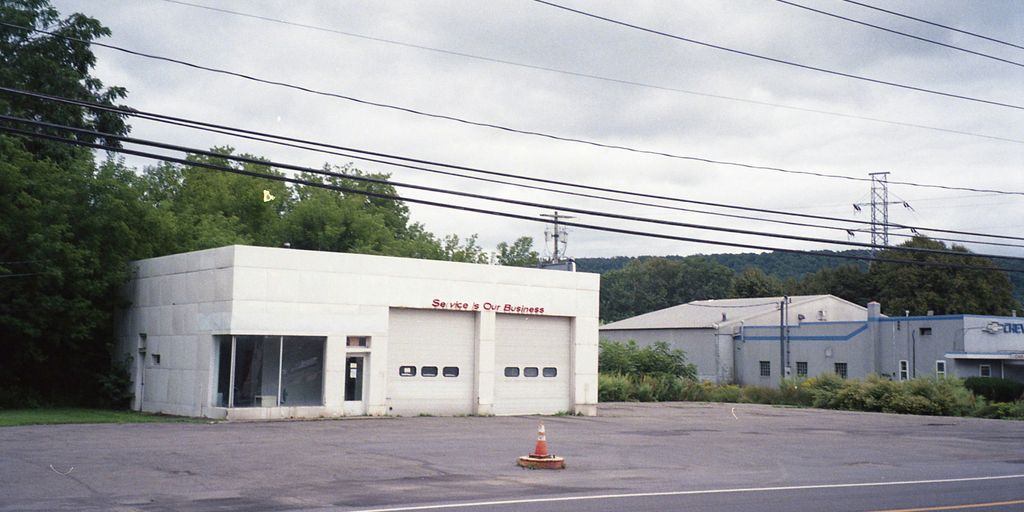Thinking about a career in chip making? It’s a pretty big deal these days, especially with companies like TSMC setting up shop in the US. We’re talking about super high-tech jobs that are shaping the future, but also, let’s be real, they’re pretty tough to get into. It’s not just about having a degree; it’s about having the right skills and being ready for a really demanding environment. This article will give you a look at what it takes to land one of these TSMC careers USA.
Key Takeaways
- TSMC’s move into the US, particularly with its Arizona fabs, signals a major shift in semiconductor manufacturing but also highlights the significant need for a skilled US workforce.
- The US faces a substantial gap in semiconductor talent, with a shortage of skilled technicians and engineers, a situation made more complex by decades of offshoring manufacturing.
- Building a strong talent pipeline for TSMC careers USA requires a multi-pronged approach, including partnerships with community colleges and universities, alongside robust in-house training programs.
- Semiconductor fabrication is incredibly complex, demanding precision at the atomic level and hands-on experience, which the US workforce is currently lacking in many areas.
- TSMC faces strong competition from rivals like Samsung and Intel, all pushing advancements in cutting-edge process technologies, making the race for manufacturing dominance intense.
Understanding TSMC’s US Footprint

TSMC’s presence in the United States is a pretty big deal, especially with that massive fab they’re building in Arizona. It’s not just about making chips here; it’s a huge investment that’s changing the game for semiconductor manufacturing in the US. They’re pouring billions into this project, aiming to bring advanced chip production closer to home.
Arizona Fab Expansion and Investment
The Arizona facility is TSMC’s flagship US operation. Originally planned as a $16 billion project, the final cost ballooned to $20 billion. This plant is set to produce 4nm chips, with an initial target of 20,000 wafers per month. By December 2024, TSMC reported that the Arizona fab’s yield was matching their plants in Taiwan, though at a higher cost per chip. As of March 2025, the site employed around 3,000 people. Beyond this initial fab, TSMC has announced even more ambitious plans, including an additional $165 billion investment to construct three new fabrication plants, two advanced packaging facilities, and a major research and development center. This makes it the largest single foreign direct investment in US history, showing a serious commitment to building out US semiconductor capacity.
Global Deployment, Rooted in Taiwan Strategy
While the US expansion is significant, TSMC is very clear about its core strategy: "Global Deployment, Rooted in Taiwan." This means that while they are investing heavily in places like Arizona, the heart of their advanced research and development, especially for leading-edge nodes like 2nm, will remain in Taiwan. This approach aims to balance global reach with maintaining their technological edge and core operations in their home country. However, this strategy has also faced scrutiny, with some in Taiwan expressing concerns that expanding too much in the US could weaken Taiwan’s own technological advantage.
TSMC’s Capacity vs. Global Demand
Even with the massive investments in Arizona, the US fabs will represent a relatively small portion of TSMC’s overall production. The two Arizona facilities are projected to produce about 600,000 wafers annually. For context, TSMC’s total global output is around 16 million wafers per year. This means the US operations will account for only about 5-7% of TSMC’s total capacity. While this is a substantial increase for US-based advanced manufacturing, it highlights that the majority of TSMC’s leading-edge chip production will still be centered in Taiwan. This disparity is a key point of discussion when considering the long-term security of the global semiconductor supply chain.
The Growing Need for Semiconductor Talent
It’s no secret that the semiconductor industry is booming, but that growth comes with a big challenge: finding enough people to do the work. The US is facing a serious shortage of skilled workers in this field, and it’s projected to get worse. We’re talking about a potential gap of 300,000 unfilled roles by 2030. This isn’t just about needing more hands; it’s about needing highly specialized skills that take years to develop. Think about it, making a modern chip involves thousands of steps, each needing incredible precision. It’s a far cry from the manufacturing jobs of the past.
Bridging the US Semiconductor Workforce Gap
Taiwan has done a pretty amazing job building up its semiconductor workforce. They have about one skilled worker for every 190 citizens. Here in the US, that ratio is closer to one for every 960 people. TSMC, for example, employs a massive number of engineers and technicians and runs its own extensive training programs. They even send American engineers to Taiwan for hands-on experience because the local talent pool just isn’t there yet. This situation highlights the need for more community college programs, university partnerships, and direct industry training here at home. We need to create pathways for people to get into these jobs, much like TSMC does in Taiwan.
Lessons from Taiwan’s Skilled Labor Pool
Taiwan’s success in cultivating a deep, purpose-trained labor force is something the US could really learn from. Their chip sector has benefited from decades of focused development, including close collaboration between the government and universities. This has led to specialized semiconductor colleges and research institutes that feed graduates directly into the industry. It’s a model that emphasizes practical, hands-on training alongside academic study. We need to think about how to replicate that kind of synergy in the US to build a similar pipeline of talent for companies like TSMC.
Addressing the Shortage of Skilled Technicians
One of the biggest hurdles is the lack of experienced technicians. Decades of sending manufacturing overseas means we’ve lost a lot of that on-the-job learning. When new fabs are being built in places like Arizona, companies are already having to bring in trainers from Taiwan because local technicians don’t have the necessary experience with advanced equipment. This isn’t something that can be fixed overnight. It requires a concerted effort to train a new generation of technicians, perhaps through apprenticeships and specialized "boot camps." The CHIPS Act has some funding for workforce development, which is a start, but we need sustained investment and innovative approaches to fill these critical roles. The future of semiconductor manufacturing in the US really depends on it, and you can see how important this is for the semiconductor industry.
Cultivating Expertise for TSMC Careers USA
Getting into the semiconductor game, especially with a company like TSMC, isn’t like picking up a new hobby. It’s a whole different ballgame that needs a specific kind of know-how. Think about it – we’re talking about making chips that are incredibly tiny, down to the atomic level. That kind of precision doesn’t just happen; it’s built over time with a lot of focused training and hands-on work. Taiwan has been doing this for decades, building up a huge pool of skilled people. They’ve got about one skilled semiconductor worker for every 190 citizens. Here in the US, that ratio is more like one for every 960 people. So, yeah, there’s a bit of a gap to close.
The Role of Community Colleges and University Partnerships
To start filling that gap, we need more programs that connect schools directly with the industry. This means community colleges working with local fabs to create apprenticeships or special training ‘boot camps’ for technicians. Universities are also key. TSMC, for example, puts a lot of money into university research and even offers classes right on campus for students working towards their degrees. It’s about making sure what students learn in the classroom actually applies to what they’ll be doing on the factory floor. We’re talking about building a pipeline of talent that’s ready to go from day one.
TSMC’s In-House Training and Development
Even with a solid education, the real learning often happens on the job. TSMC knows this, which is why they have their own training centers. Every new engineer has to go through a pretty intensive in-house academy, usually lasting a few months, before they even step foot in a fabrication plant. This isn’t just about learning the company’s specific procedures; it’s about getting that practical, real-world experience that’s so hard to get otherwise. It’s like a crash course in making chips, but a really good one.
Attracting STEM Students to Chip Manufacturing
We also need to get more young people excited about careers in science, technology, engineering, and math, specifically in chip manufacturing. It’s a field that’s constantly changing and pushing the boundaries of what’s possible. Think about the advancements in 2nm process technology – that’s pretty cutting-edge stuff. We need to show students that this isn’t just about working in a factory; it’s about being part of the innovation that powers everything from our phones to supercomputers. Making these jobs seem accessible and highlighting the cool factor is a big part of getting more students to consider this path.
Navigating the Complexities of Semiconductor Manufacturing
Building a cutting-edge semiconductor fab is a massive undertaking, way more complicated than most people realize. Think about the equipment alone; you’ve got these specialized lithography machines that can cost hundreds of millions of dollars each. A single factory might need ten of them, easily running into billions just for that one type of machine. And that’s before you even get to the dozens of other systems needed for things like depositing materials, implanting ions, or the specialized chemicals and coatings. It’s a huge capital investment.
Then there’s the infrastructure. A chip fab needs a super stable power supply, tons of purified water, and a whole system for managing waste. It’s basically like building a small city, and if the local utilities can’t guarantee consistent supply, the whole operation can get seriously messed up. They’ve even had to cancel or move fabs because of utility issues. Plus, you need these incredibly clean environments – cleaner than a hospital operating room – to prevent even the tiniest speck of dust from ruining a chip. This means advanced air filters, precise temperature and humidity control, and special foundations to dampen vibrations. It’s a lot to manage.
The Evolution of Chip Fabrication and Offshoring
Back in the day, American companies used to do everything themselves, from designing chips to making them. They were really proud of their own factories. But as chips got more complex and demand exploded, it became harder to keep up. So, companies started sending some of the simpler manufacturing steps overseas, kind of like what happened with other industries. Early on, it was mostly basic components, not the really advanced stuff. But over time, especially with things like memory chips, Asian manufacturers got really good and started competing directly. This shift meant that a lot of the hands-on manufacturing know-how, the practical experience, started moving away from the US. It’s a big reason why, when TSMC decided to build here, they had to send hundreds of American engineers to Taiwan for training. It highlights how much the industry has changed and where the practical skills ended up. You can see this trend reflected in the global semiconductor market, which is constantly adapting to new demands and geopolitical factors.
Learning on the Line: Gaining Practical Experience
Making advanced chips is incredibly complex. It involves thousands of steps, manipulating materials at the atomic level. This kind of work isn’t just learned from books; it requires hands-on experience. In Taiwan, there’s been decades of building up this expertise, creating training programs that combine university studies with practical, on-the-job learning. TSMC, for instance, invests heavily in university partnerships and runs its own training centers where new hires spend months getting practical experience. This is the kind of deep, practical knowledge that’s hard to replicate quickly. The US is trying to build this up, but it’s a challenge because the practical skills and the theoretical knowledge have to grow together. It’s not something you can just import overnight; it takes time and dedicated effort to build a skilled workforce.
The Importance of Atomic-Scale Precision
Semiconductor manufacturing is all about precision, down to the atomic level. We’re talking about arranging atoms in specific patterns to create the tiny circuits that power our electronics. This requires incredibly sophisticated equipment and processes. For example, lithography, the process of printing circuit designs onto silicon wafers, has to be accurate to within a few nanometers. A nanometer is one billionth of a meter – that’s incredibly small! Even the slightest contamination or vibration can ruin an entire batch of chips. This extreme precision is why cleanrooms are so critical and why the machinery involved is so expensive and complex. It’s a constant battle against imperfections, and it’s what separates leading-edge chip production from anything else. The progress in this area is relentless, with companies pushing towards smaller and smaller feature sizes, like the upcoming 2nm process technologies. This drive for precision is what keeps the industry moving forward.
TSMC’s Competitive Landscape and Future

It’s no secret that TSMC is the big player in the chip-making world, but things are getting more interesting. You’ve got Samsung and Intel really pushing to catch up, especially with their own 2-nanometer (2nm) process technologies. Samsung is aiming for mass production around 2025, and Intel is right there with them, targeting the same year with their 18A process. This means the race to create the most advanced chips is pretty intense right now.
Competition with Samsung and Intel
TSMC has been the leader for a while, controlling a huge chunk of the global foundry market – like 67% as of late 2024. They also make about 92% of the world’s really advanced chips. But Samsung and Intel aren’t just sitting back. They’re investing heavily and developing their own next-gen tech. It’s a high-stakes game where being first with the latest process node can mean a lot of business.
Advancements in 2nm Process Technology
TSMC is making big moves with its 2nm process. They’re expecting to start mass production in the second half of 2025. Compared to their 3nm chips, these 2nm ones should be faster or use less power. Think 10-15% faster at the same power level, or 25-30% less power if they run at the same speed. This tech is going to be used in everything from supercomputers to your phone and cloud data centers. They even had a ceremony for their expanded 2nm facility in Kaohsiung, Taiwan, which shows how serious they are about this.
The Race for Advanced Process Nodes
This whole push for smaller, faster, and more efficient chips is really a race. It’s not just about TSMC anymore. Companies like Nvidia are looking at where they’ll get their chips made, considering both TSMC’s US facilities and Intel’s new processes. This is partly driven by government interest in having more chips made domestically, especially in the US. TSMC itself has a plan for its US operations, but a lot of the cutting-edge research and development is still expected to stay in Taiwan. It’s a balancing act for them, trying to expand globally while keeping their core innovation strong at home.
Building an American Semiconductor Ecosystem
It feels like the US used to be the king of making computer chips, right? Back in the day, companies like Intel and Fairchild were churning out transistors right here. But then, things changed. Manufacturing started moving overseas, mostly to Asia, because it was cheaper and, well, easier. This whole process, called offshoring, meant we lost a lot of that hands-on experience, the kind you only get by actually working on the factory floor, day in and day out. It’s like learning to ride a bike – you can read about it all you want, but you’ve got to get on and pedal.
Now, everyone’s talking about bringing chip manufacturing back to the US. It’s a huge deal for national security and our economy. Think about it: if something happens in Taiwan, where a lot of the world’s advanced chips are made, it could really mess things up for us. So, building up our own chip-making ability is pretty important. It’s not just about having the big factories, though. It’s about creating a whole system, an ecosystem, that supports this industry. That means training people, investing in new ideas, and making sure American companies are committed to using US-made chips. It’s a big job, and we’re still figuring out the best way to do it, but the goal is clear: to go from being mostly a chip consumer to being a major creator again.
Looking Ahead: Building a Stronger Semiconductor Future
So, bringing TSMC’s advanced chipmaking to the US is a big deal, but it’s not a simple fix. We’ve seen how much work goes into training people, and the US really needs to step up its game in creating skilled workers. It’s going to take a lot more than just building factories; we need schools, training programs, and maybe even some changes to how we bring in talent from other countries. The goal is to make sure America can keep up with the fast pace of chip technology, not just for our economy, but for our security too. It’s a huge challenge, but getting it right means America can be a leader in tech for years to come.
Frequently Asked Questions
What is TSMC doing in the USA?
TSMC is building new factories in the United States, especially in Arizona. These factories will make computer chips. This means there will be new job opportunities in the U.S. for people who want to work in making these tiny, important parts for computers and phones.
Why does the U.S. need more people to work in chip factories?
Making computer chips is very complicated and needs special skills. The U.S. needs more people trained to do this work. TSMC, like other chip companies, is working with schools and offering training to help people learn the skills needed for these jobs.
How is TSMC helping people get trained for chip jobs in the U.S.?
TSMC is working with colleges and universities to create programs that teach students about making chips. They also have their own training programs for new employees. This helps ensure they have enough skilled workers for their new factories.
What makes working in a chip factory so challenging?
Chip manufacturing is a very advanced process. It involves working with materials at a super tiny, atomic level. It requires a lot of precision and careful work, similar to how scientists work in a lab but on a much larger scale.
Who are TSMC’s main competitors in the chip industry?
TSMC is a leader in making advanced computer chips. Other big companies like Samsung and Intel are also trying to make the newest and best chips. It’s a competitive field where companies are always trying to invent better technology.
Why is it important for the U.S. to make more chips domestically?
The U.S. used to make a lot more of its own computer chips but moved much of that work overseas. Now, the country wants to bring chip making back to build a stronger, more reliable supply of these essential parts, which is important for national security and technology.














